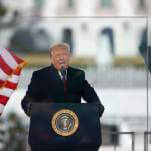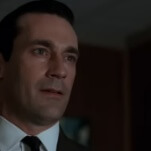La Flamme Rouge Turns Balance into an Ethos

One of the biggest challenges for boardgame designers in this golden age of cardboard is ensuring games stay reasonably balanced throughout their play—that players who fall behind early at least have a reasonable chance to catch up through smart play and/or a little luck. La Flamme Rouge is the first game I’ve come across that turns this, as Walter Sobchak might say, into an ethos: The game actively pulls laggards up closer to the leader, which gives this game an entirely new feel despite simple rules and a quick playing time.
First released by a Finnish publisher last year and out this spring from Stronghold Games in English, La Flamme Rouge is a Tour de France-themed game in all but name (like that famous Springfield horror film, The Shinning), with two to four players controlling two bicyclists apiece on a long and variable racetrack. Each player then gets two decks of movement cards, one for each of your cyclists, with the Sprinteur deck containing cards with 2 to 9 movement points and the Rouleur deck containing cards with 2 to 7 movement points.
On a turn, each player draws four cards from his/her Sprinteur deck, chooses one to play on this turn, and “recycles” the other three face-up to the bottom of that deck. S/he then does the same thing with the Rouleur deck. Players all choose cards at the same time, and reveal them in the order in which the cyclist tokens appear on the track. You move your cyclist forward the number of spaces on the movement card you played, passing through other cyclists if needed but unable to end a turn on the same space as someone else’s token. The track has two lanes, so you can move your cyclist to the left lane if needed, but if the entire square (both lanes) is occupied, you must stop your cyclist in an open space behind those two. Played movement cards are removed from the game.
After every player has played his/her movement cards, the balancing mechanism kicks in. First, you “slipstream” any cyclist tokens who have exactly one empty space ahead of them on the track, starting from the read of the pack. You move any such cyclists up so that they’re directly behind whoever was in front of them, and continue doing so until you reach the front of the pack—so you can easily end up with all tokens bunched together even if there had been several empty squares after the movement cards were played.







































